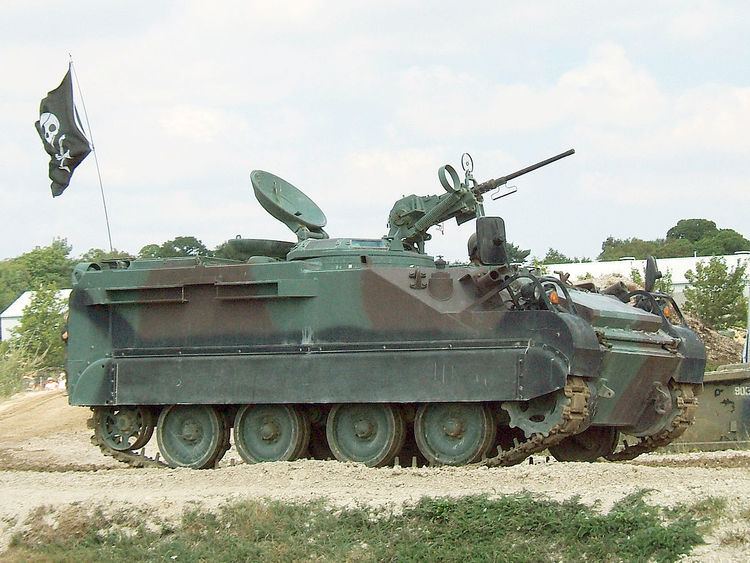Length 4.60 m Height 2.18 m | Weight 8.77 tonnes Width 2.41 m | |
 | ||
Used by CanadaNetherlandsBahrainChile | ||
The Lynx reconnaissance vehicle (manufacturer's name: M113½ Command and Reconnaissance Vehicle, abbr. M113 C&R) is a United States-built tracked armoured fighting vehicle, which was employed by the armed forces of the Netherlands and Canada. Dutch vehicles were exported in the 1990s to Bahrain and Chile, according to SIPRI 35 and 8 vehicles respectively.
Contents
The Lynx is a smaller command and reconnaissance vehicle built as a private venture in 1963 by FMC Corp., the manufacturer of the M113 armoured personnel carrier. It was offered with either Gas or Diesel engines. The Lynx uses M113A1 components, including aluminum armour, but with only four road wheels on each side and the engine in the rear instead of the front. The U.S. Army adopted the M114 in favor of the M113½, but it was employed in the reconnaissance role by the Netherlands and Canada (where it was officially designated the Lynx).
The Lynx is amphibious, propelled in the water by its tracks. Before swimming, a trim vane is erected at front, bilge pumps started, and covers mounted on the air intake and exhaust. In practice, crews would close hatches and ford shallow streams at high speed.
Service history
The Royal Netherlands Army accepted 250 vehicles, beginning in 1966. The Dutch version of the Lynx has the driver front-left, radio operator/7.62mm machine gunner front-right, and a .50-calibre machine gun cupola centre. In the 1970s, the heavy machine gun was replaced by an Oerlikon-Bührle GBD-ADA turret mounting a 25mm KBA cannon. Dutch vehicles were later exported to Bahrain. The Dutch designated their vehicles the M113 C&V
The Canadian Forces accepted 174 vehicles from 1968, replacing their Ferret armoured cars. Lynx was issued to the reconnaissance squadron of an armoured regiment (D Sqn). The squadron consisted of three troops, each equipped with seven Lynxes—three two-vehicle patrols plus the troop leader's vehicle (Militia [reserve] armoured reconnaissance units trained for the role with Jeeps or Iltis 4×4 trucks). In addition, nine Lynxes equipped the reconnaissance platoon of an infantry battalion's combat support company, as well as the reconnaissance sections of combat engineer field troops.
In the Canadian Lynx, the crew commander's cupola is located middle-right, and the observer's hatch was rear-left. The commander operates the manually traversed M26 heavy machine gun cupola from inside the vehicle, but reloads it with the hatch open. The rear-facing observer operates the radio and fires the pintle-mounted 7.62mm machine gun. Behind the commander, on the floor, was a drop-down escape hatch.
The Canadian Lynx was withdrawn from service in 1993, and replaced by 203 Coyote eight-wheeled reconnaissance vehicles by the end of 1996.
Operators
Survivors
Existing Lynxes include several monuments and museum pieces, and a few running vehicles. This list only includes the M113 C&R prototypes and Lynx's. It does not include surviving Dutch M113 C&Vs.
Running Lynxes
M113 C&R Prototypes
